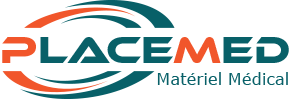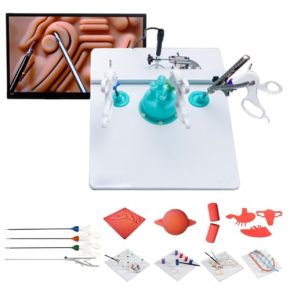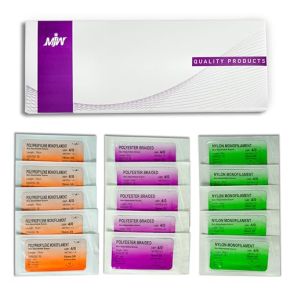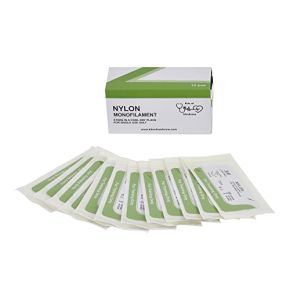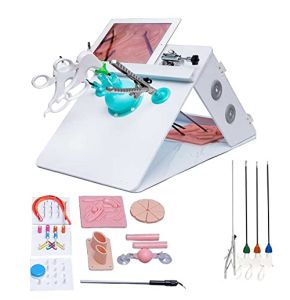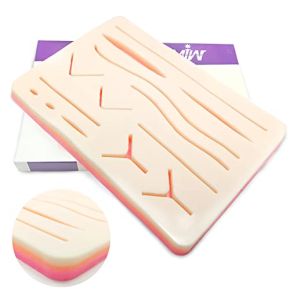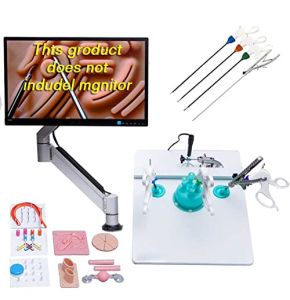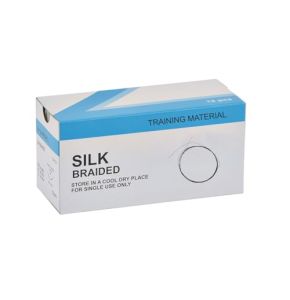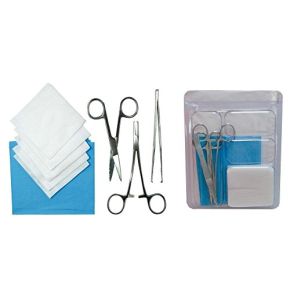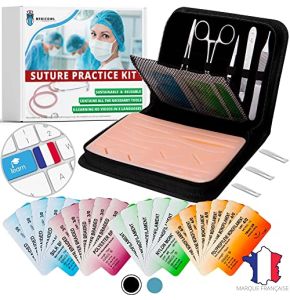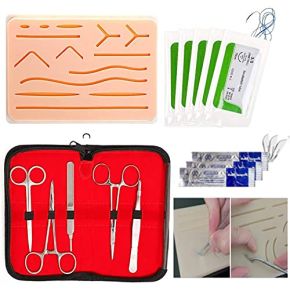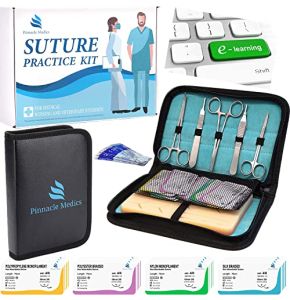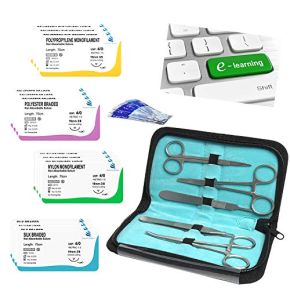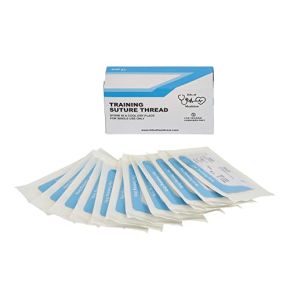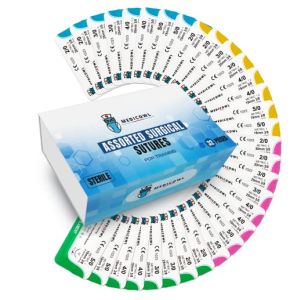Surgical Suture Thread
18/11/2024 501
18/11/2024 477
18/11/2024 481
18/11/2024 449
18/11/2024 456
18/11/2024 524
18/11/2024 426
18/11/2024 480
18/11/2024 454
18/11/2024 449
18/11/2024 480
Sutures: The Art of Perfect Healing
Sutures are essential tools in medicine for closing wounds and surgical incisions. They play a crucial role in the healing process. Choosing the appropriate suture and the suturing technique used can directly influence the speed and quality of healing. At Placemed, we offer a wide range of sutures to meet the specific needs of each medical procedure.
What are the different types of sutures and their characteristics?
There is a variety of sutures, each possessing unique properties that make them suitable for specific uses. Here are the main types of sutures along with their distinctive characteristics:
- Absorbable Sutures: These sutures naturally break down in the body over time. They are used for internal tissues or wounds that heal quickly. They eliminate the need for patients to return for suture removal. Common materials used for absorbable sutures include polyglycolic acid, polylactic acid, and surgical catgut.
- Non-Absorbable Sutures: These sutures do not break down in the body and must be manually removed after the wound has healed. They are used for external wounds or tissues that require prolonged support. Materials used include nylon, silk, and stainless steel.
- Monofilaments: Composed of a single filament, these sutures have a smooth surface that glides easily through tissues. They have lower risks of causing infections as they do not absorb bacteria. However, they can be more difficult to knot. Nylon and polypropylene are examples of monofilaments.
- Multifilaments: Made of multiple braided filaments, these sutures are more flexible and easier to handle. They offer better knot security. However, their structure can promote bacterial penetration. Silk and braided polyglycolic acid are examples of multifilaments.
- Materials Used: Sutures can be made from natural or synthetic materials. Natural materials include silk and catgut, while synthetic materials include nylon, polyester, and polydioxanone. The choice of material depends on the procedure and the surgeon's preferences.
Understanding the differences between these types of sutures helps practitioners choose the most suitable suture for each situation, thereby ensuring better healing for the patient.
How to choose the appropriate suture for a specific procedure?
Choosing the right suture is an important decision that can affect the outcome of the procedure. Here are the factors to consider when selecting a suture:
- Type of Tissue: Different body tissues have distinct characteristics. For example, skin, muscles, and internal organs have different textures and strengths. An absorbable suture can be used for internal tissues that heal quickly, while a non-absorbable suture may be preferable for skin that requires longer support.
- Required Tension: If the wound is under high tension, a robust suture like a non-absorbable multifilament may be necessary to keep the edges together. For low-tension wounds, an absorbable monofilament may suffice.
- Duration of Support Needed: Some wounds require prolonged support for proper healing. In such cases, a non-absorbable suture or a long-lasting absorbable suture is chosen. For wounds that heal quickly, a short-duration absorbable suture is adequate.
- Tissue Reaction: Some patients may have allergic or inflammatory reactions to certain materials. It is important to choose a biocompatible suture to minimize the risk of rejection or infection.
- Ease of Handling: Surgeons may prefer certain sutures for their manejability. Multifilaments are often easier to knot, which can be important for delicate procedures.
By considering these factors, the surgeon can select the suture that will provide the best support to the wound and promote optimal healing.
What are the common suturing techniques and their indications?
There are several suturing techniques used in surgery, each with its own indications. Here are the most common techniques:
Simple Sutures
This is the basic technique where each stitch is tied separately. It is used to close straight and clean wounds. Simple sutures allow precise adjustment of tension on each stitch and are easy to remove. They are ideal for superficial and shallow wounds.
Continuous Sutures
A continuous suture is a running stitch where the thread is passed multiple times through the wound edges without being cut between stitches. It is quick to perform and evenly distributes tension along the wound. It is used for long wounds or internal tissues. However, if there is an infection, the risk of spread is higher with this technique.
Crossover Sutures
Also known as "X" stitches, crossover sutures provide better strength and are used for wounds under tension or areas that move a lot, such as joints. They firmly hold the wound edges together and reduce the risk of wound opening.
Intradermal Sutures
This technique is used for aesthetic reasons as it leaves fewer visible scars. The thread is placed under the skin, bringing the wound edges together without visible stitches on the surface. It is often used for facial surgeries or other visible areas.
The choice of technique depends on the location of the wound, the type of tissue, the tension on the wound, and aesthetic considerations. An experienced surgeon will know which technique is most appropriate for each situation.
How to prevent suture-related complications, such as infections or dehiscence?
Preventing complications is essential to ensure quick and problem-free healing. Here are measures to take to avoid infections or dehiscence (wound reopening):
Aseptic Techniques
Maintaining a sterile environment during the procedure is crucial. This includes hand washing, wearing sterile gloves, using sterile instruments, and disinfecting the patient's skin. Operating fields must be clean to prevent wound contamination.
Proper Handling
Tissues must be handled carefully to avoid additional trauma. Excessive tension on sutures can damage tissues and cause dehiscence. It is important not to overtighten stitches and to evenly distribute tension.
Post-Operative Care
After suturing, it is important to monitor the wound for signs of infection, such as redness, swelling, heat, or pus. Patients should receive clear instructions on how to care for their wound at home, including cleaning, dressing changes, and activities to avoid.
Choosing the Appropriate Suture
Using the right suture reduces the risk of complications. For example, choosing an antimicrobial suture can help prevent infections. Similarly, an absorbable suture may be preferable to avoid additional manipulation related to suture removal.
Training and Experience
Healthcare professionals must be well-trained in suturing techniques. Good knowledge of procedures and practical experience contribute to reducing the risks of errors and complications.
By following these measures, the risks of suture-related complications can be significantly reduced, ensuring better healing for the patient.
What technological advancements exist in sutures?
Sutures have benefited from technological advancements aimed at enhancing safety, effectiveness, and patient comfort. Here are some of the recent advancements in this field:
- Antimicrobial Sutures: These sutures are impregnated with antibacterial agents that help prevent infections at the suture site. They are particularly useful for patients at high risk of infection or for procedures in areas where infections are common.
- Medicated Release Sutures: These sutures can gradually release medications, such as antibiotics or anti-inflammatories, directly into the wound area. This helps prevent infections and reduce inflammation, thereby improving healing.
- Biodegradable Sutures: New biodegradable materials break down more predictably and with fewer tissue reactions. They provide support during the necessary period and then degrade without leaving harmful residues.
- Colored Sutures: Sutures in different colors help surgeons easily identify them during and after the procedure. This is useful for internal sutures or when multiple types of sutures are used.
- Reinforced Sutures: Some sutures are designed to be stronger while remaining thin. They provide additional support for tissues under high tension, reducing the risk of dehiscence.
- Smart Sutures: Research is ongoing to develop sutures capable of monitoring healing and transmitting data to doctors. This could allow for precise monitoring and rapid intervention if necessary.
These innovations improve the quality of care and contribute to safer and more effective surgical outcomes.
In conclusion, sutures are key elements in the healing process of wounds and surgical incisions. Choosing the appropriate suture and mastering suturing techniques are essential to ensure optimal healing and prevent complications. At Placemed, we are committed to providing healthcare professionals with a wide range of high-quality sutures, incorporating the latest technological advancements. We understand the importance of every detail in medical care, which is why we offer reliable and innovative products to support your practice. Trust Placemed for your suture needs and contribute to better health for your patients.
 Francais
Francais 